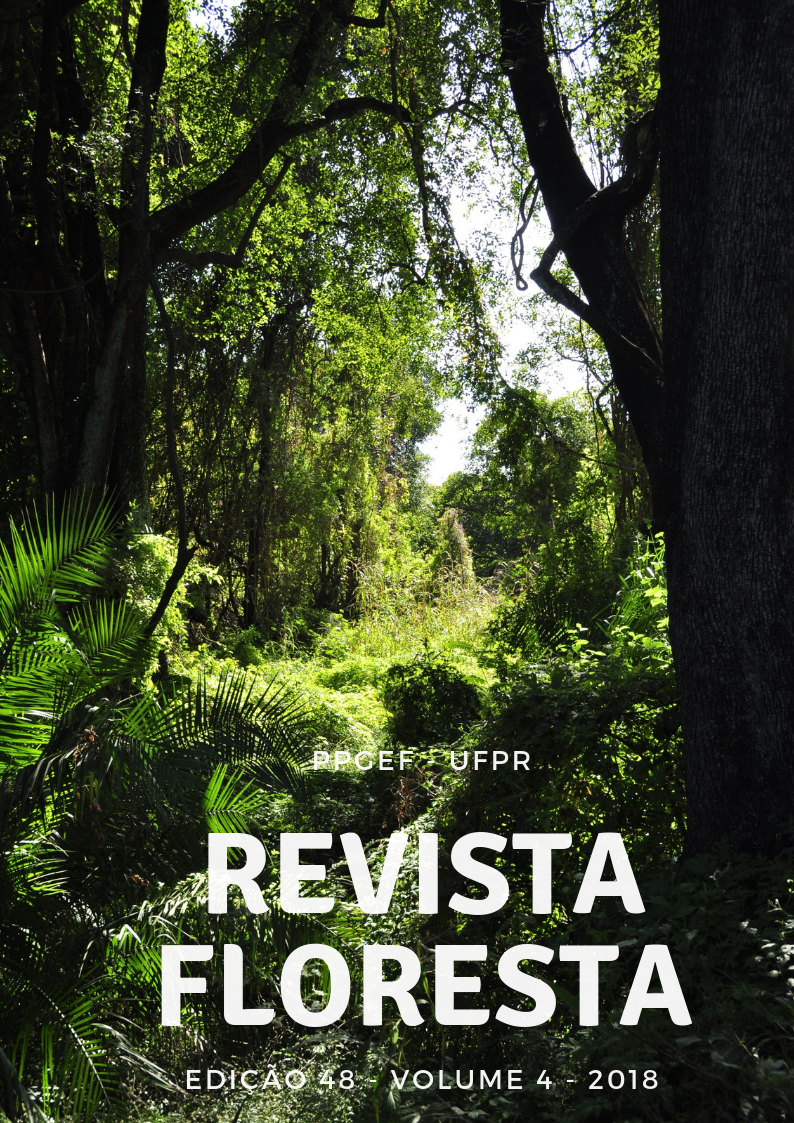DAMAGE CAUSED TO THE REMAINING TREES OF A PINUS STAND SUBMITTED TO TWO MECHANIZED THINNING MODELS
DOI:
https://doi.org/10.5380/rf.v48i4.55623Palavras-chave:
Timber harvesting, quality, commercial thinning.Resumo
The objective of this study was to evaluate the damage to remaining trees of pine stand submitted to two models of mechanized thinning. Data were collected in the wood harvesting areas of a forest company in Southern Brazil during the first commercial thinning with 10-year-old trees. The thinning was executed by a harvester in cutting the trees and a forwarder in extracting the logs, which was defined by thinning in the 5th planting line (treatment T1); and by a chainsaw in felling the central trees, by a harvester in cutting the other lines, and by a forwarder in extracting the logs in the experimental area defined by thinning in the 7th planting line (treatment T2). The damage to remaining trees in the stand in relation to the dimensions and location of the machinery operating trail was evaluated, and data were analyzed through descriptive statistics. The results showed that treatment T2 caused greater damage in the remaining trees due to greater handling of felled and processed trees and a higher concentration of wood piles in the operating trail of the machines. In addition, there was greater contact of the harvester with the remaining trees when searching for the trees felled by the chainsaw was conducted to perform the final processing. Treatment T1 proved to be more suitable for thinning pine stands.
Downloads
Publicado
Como Citar
Edição
Seção
Licença
Direitos Autorais para artigos publicados nesta revista são do autor, com direitos de primeira publicação para a revista. Em virtude da aparecerem nesta revista de acesso público, os artigos são de uso gratuito, com atribuições próprias, em aplicações educacionais e não-comerciais.A revista, seguindo a recomendações do movimento Acesso Aberto, proporciona acesso publico a todo o seu conteudo, seguindo o principio de que tornar gratuito o acesso a pesquisas gera um maior intrcambio global de conhecimento.
Conteúdos do periódico licenciados sob uma CC BY-NC-SA 4.0



